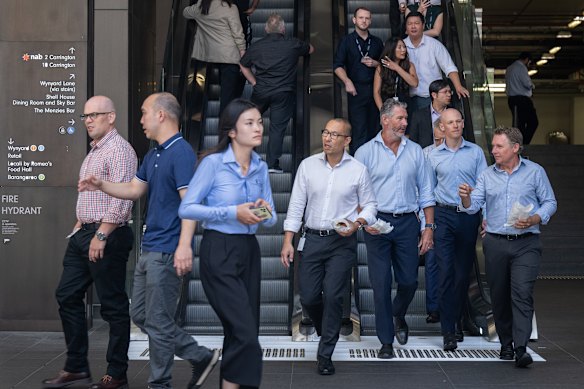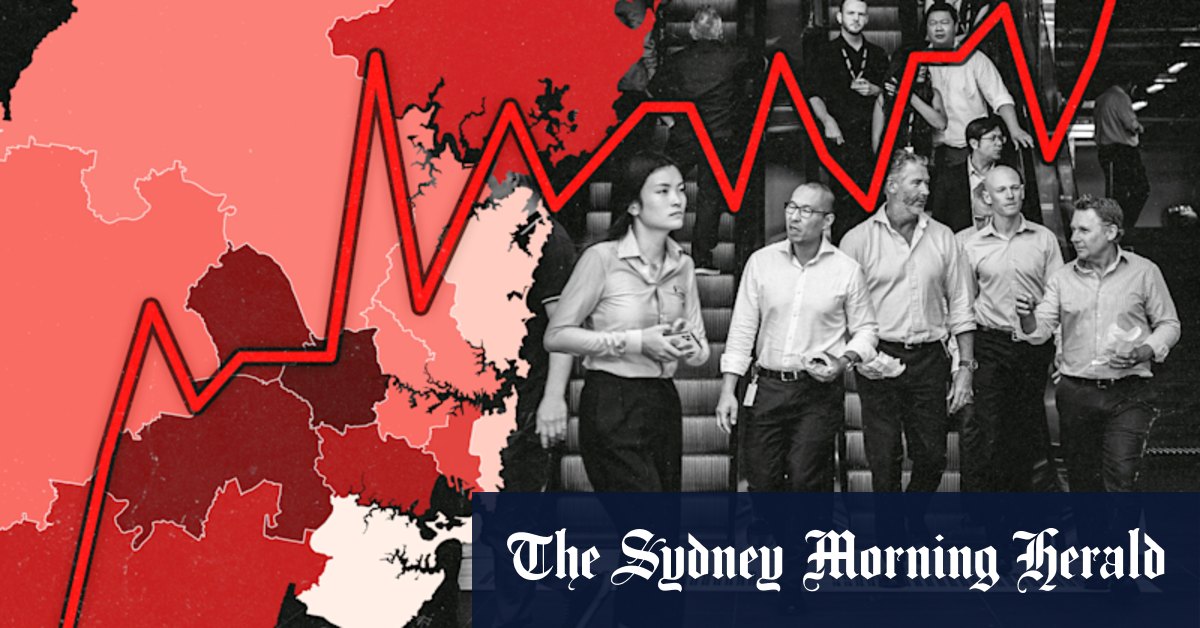There has also been a decline in the number of internet job advertisements in Greater Sydney during the past year which, Rawnsley says, “reinforces signs of a weakening labour market”.
The NSW unemployment rate climbed to 4.4 per cent in June, the worst in nearly four years and well up on the 3.9 per cent registered in April.
There were 205,000 people looking for work in NSW last month, the highest number since October 2021, when the state economy was recovering after the disruption of COVID-19 restrictions.
AMP chief economist Dr Shane Oliver said the jump in unemployment coincided with other sluggish economic indicators.
“It’s not necessarily a sign of collapse … but it is consistent with a broader weakening in the economy,” he said.
During the past two years, the NSW jobs market has been underpinned by robust growth in public sector employment, including healthcare, disability care, education and public administration.
But job advertising data shows demand in those sectors has weakened.
“Public sector jobs ads in NSW have come off from a peak around 15,000 to 16,000 in late 2022, and are now down to around 11,000,” Rawnsley said.
Without a pickup in demand for labour in the NSW private sector, the state’s jobs market could deteriorate further.
Oliver said lower borrowing costs are required to lift consumer spending and boost business activity in NSW.
“We need lower interest rates to enable private sector demand, including housing construction, business investment and consumer spending, to pick up and fill some of the gap,” Oliver said.

There are indications that demand for white-collar jobs has eased in Sydney during the past year. Credit: Louie Douvis
“So far, it is unclear if that will happen quickly enough to prevent a more noticeable rise in unemployment … the risk is that if we don’t get a pickup in private sector economic activity, then unemployment will push towards 5 per cent in coming months.”
The Reserve Bank monetary policy board surprised investors and economists three weeks ago when it decided against cutting interest rates at its July meeting.
But financial markets have priced in a 98 per cent chance the RBA will cut interest rates by 0.25 percentage points when it meets next month.
Oliver says his “base case” forecast is for 0.25 percentage point rate cuts in August, November, February and May.
Last month’s rise in unemployment has cast doubt on jobs forecasts made in last month’s NSW budget.
The state’s jobless rate is already higher than the 4 per cent predicted for June 2025 in the budget papers. Despite signs of weaker demand for labour, the government forecasts the jobless rate will be 4.25 per cent in June next year, below the current rate of 4.4 per cent.
Employment conditions in NSW have weakened markedly compared with two years ago. In June 2023, the state’s unemployment rate reached a historic low of 2.9 per cent and the total number of unemployed people fell to just 132,000. Since then, the unemployment rate has risen 1.5 percentage points, and the number of people seeking work in the state has swelled by more than 70,000.
Start the day with a summary of the day’s most important and interesting stories, analysis and insights. Sign up for our Morning Edition newsletter.

